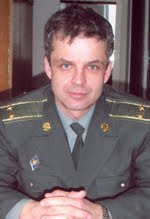Not long ago I've gotten a wonderful
opportunity to visit another interesting place located in Saxony and linked closely
with the history of Sweden.
Nowadays a small village of Altranstädt, located 10 kilometers away
from Leipzig, definitely doesn’t play such important role like in the very
beginning of 18th century when Swedish king Charles XII stayed there
for one year until he began his fatal Russian campaign of 1708 concluded with
the defeat of Swedish army in the Battle of Poltava on 27 June 1709. You hardly
could meet a large crowd of tourists there. Just a few local lovers of history
or those who came from Sweden,
Poland or Russia could
break the silence of Altranstädt castle. I couldn't help feeling like the time has
stopped in endless castle corridors with century-old oak floor for some
completely incomprehensible reason.
In April 1945 the Western Saxony was conquered by American troops, under
the command of General Patton. The Eastern Saxony,
at the same time, was occupied by Soviet troops. The agreement on post-war
occupation zones, during the Potsdam Conference, provided that the entire state
of Saxony would come under Soviet control. As
such, West Saxony was transferred to the
Soviet Zone, by the American occupation forces in July 1945.
During the Soviet occupation
the castle was turned into dwelling-house except a few rooms where negotiations
have taken place in 1706 and 1707. Soon after the German reunification the
castle was declared a national monument and a small museum located in two rooms
has been completed. Not long ago the castle has been renovated although still remains
unknown for many Germans. You can see a few pictures taken in the castle a few weeks ago.
The Treaty of Altranstädt (1706) was concluded
between Charles XII of Sweden and Augustus the Strong of Saxony and Poland-Lithuania, on 13 October 1706. Augustus had to renounce his claims to the
Polish throne and his alliance with Russia. Augustus the Strong made
peace with the Swedish Empire and accepted Stanisław Leszczyński as the Polish
king. Stanisław Leszczyński was crowned king of Poland on 4 October 1705. An allied
attempt to regain control in Poland-Lithuania was thwarted by Charles XII in
the Battle of Grodno and by Carl Gustav Rehnskiöld in the Battle of Fraustadt,
both in the first months of 1706.
The Treaty or Convention of Altranstädt
was signed between Charles XII of Sweden and Joseph I, Holy Roman
Emperor on 31 August 1707. It settled the rights of Protestants in Silesia. While the
Protestant Reformation had strongly affected Silesia, the Habsburg emperors had subjected
the province to the counter-reformation in the 18th century. Especially in Upper Silesia, these measures were successful: in the
early 18th century, almost half of the Silesian population was Roman Catholic
and some 1,000 churches had been rededicated from Protestant to Roman Catholic.
During the Great Northern War, Charles XII of Sweden had marched his armies
through Silesia and occupied the Electorate of Saxony, where he forced his
adversary, elector August the Strong, into the Treaty of Altranstädt (1706).
During his one year-long stay in the small town of Altranstädt near Leipzig, Charles XII
negotiated a further treaty with the Habsburg emperor. Joseph I returned 125
churches to the Protestant communities and dispensed with any further
counter-reformatory policies. Three Protestant consistories were permitted,
restoring and stabilizing Silesian Lutheranism.
Nowadays Altranstädt is a village in Saxony, Germany,
a part of the Markranstädt district of Leipzig. The village is historically
famous for two treaties that were concluded there.






